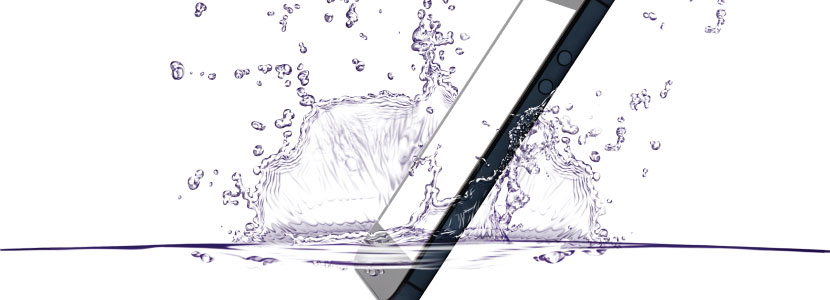Phones are an essential part of our everyday life. Whether you use your phone for work, entertainment, or just communication, your life can be disrupted without it. When accidents happen to your phone, stress and frustration can arise. How long will a repair take? Will you need to buy a new one? What if you miss an important call? These are just a few of the questions that can be running through your mind. However, the most important question should be: how did I damage my phone? If the answer is water damage, then you can usually get it back up and running with a few simple steps. Keep reading to find out what to do when your phone gets wet.
First Things First
First, you need to quickly take the phone out of water or whatever liquid you dropped it in and turn it off. If the liquid isn’t water, it is recommended that you use tap water to clean off your phone but only if your phone is water resistant. This tap water should not be running. Instead, you should dunk it into a bowl with the tap water. From there, you can dry your phone down with a lint free microfiber cloth, and make sure you take out the battery (if removable) and SIM card only once it is dry.
To help get the water out from any nooks and crannies, you can also shake your phone gently. Now is when most people would put their phone into rice. However, this isn’t a good idea for what to do when your phone gets wet. Although this may have worked for you in the past, many phone experts say that rice isn’t safe or effective. There are better ways to dry out your phone to ensure that it works again.
Next, Safely Dry Out the Inside of Your Phone
Airflow is the best remedy for water damage. According to Apple, placing your phone in front of a fan blowing cool air is a great way to dry out your phone. This also helps remove leftover moisture in the charging port. Do not use an external heat source or compressed air. Heat can cause damage to the seals and electronics inside your phone. Compressed air can potentially force water deeper into the internal systems of your phone.
Also, many phones now have liquid detection alerts that are built in. These alerts are designed to stop your from charging a phone that has moisture detected in the charging port. Alerts can also be activated in climates with high humidity. If you charge a phone that has water in the charging port, the pins in the port or the cable can corrode and cause permanent damage. This can cause your phone to stop functioning, which can lead to connectivity issues for both your phone and your charger.
Using airflow to dry out your phone can sometimes be a lengthy process. It can take up to 24 hours to dry out your phone completely. That is why many people turn to rice for a quick fix. However, the starch in rice can be unsafe for the internal components of your phone and can speed up the corrosion process within it. Rust can form inside your phone due to the liquid within it, and rice can speed up the rust process.
Safely Speed Up the Process
If you want to speed up the drying process while also protecting your phone, desiccant packets can be used. These packs are usually made from silica gel or bentonite clay and are put in packages and medication to keep moisture out. If you have any laying around, you can put them in a Ziploc bag with your phone. The desiccant packs will draw the moisture out of the bag, and unlike rice, it will not leave any residue on or inside your phone. So, the next time you get a package with a silica gel pack in it, you might just want to save it just in case.
Many phones are water resistant these days, but it is still important to take care of them around water. Now that you know what to do when your phone gets wet, we hope you can get it back up and running in no time.

At Twigby, we provide affordable cell phone service using the nation’s largest and most reliable network. The best part is you get to create your own plans based on your needs. Check out our plan options here!
